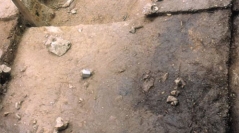

 Comptes Rendus Palevol
5 (1-2) - Pages 299-310
Comptes Rendus Palevol
5 (1-2) - Pages 299-310Evaluation of the first early human settlement of northern Europe is closely bound up with issues of climate change, human social and technical capability, and sampling visibility. The finds from Dmanisi (1.7 Ma) suggest that small-brained early Homo with simple technologies was able to colonise temperate regions, and it is unlikely that Europe presented insuperable problems compared with Georgia; or that hominids who colonised the South of Europe in favourable conditions could not advance to the north within a few thousand years. Consideration of the geological record, however, shows how much has been lost: apart from large areas currently under sea, evidence of past rivers such as the proto-Thames and Bytham helps measure the extent of erosion, much of it caused by glacial planing. Fire history, in terms of controlled fire use, appears in northern Europe by isotope stage 11, when it is widespread across the continent. Beeches Pit is a prime example indicating fire control, and social activity around fires and in fire management. Fire is however puzzlingly absent from many sites, including those of OIS13. The paper considers the alternative possibilities: that fire use was introduced through an increase in human social/intellectual capability around OIS 11, and that sampling limitations greatly reduce our chances of seeing it on earlier sites.
Fire, Middle Pleistocene, Northern Europe, Beeches Pit